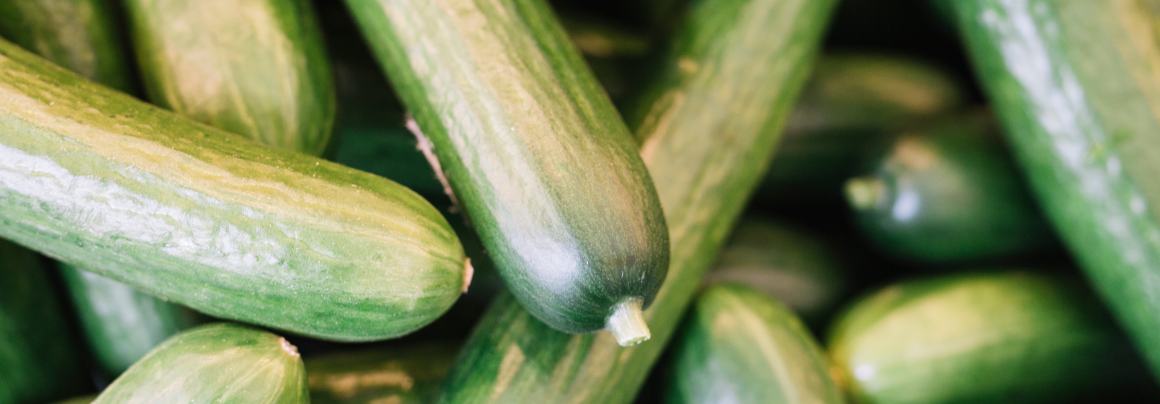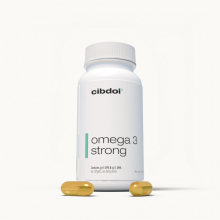Does Cucumber Contain Omega-3?
Published:
Cucumbers are refreshing, hydrating, and nutritious – a staple of salads and a popular vegetable worldwide. With benefits like antioxidants and minerals, cucumbers are considered a healthy food. But do they provide any omega-3 fatty acids? Let’s analyze the omega-3 profile of cucumbers and how to ensure adequate intake.
Contents:

Overview of Omega-3 Fatty Acids
Omega-3 fatty acids are polyunsaturated essential fats necessary for human health. The main types are:
- ALA (Alpha-Linolenic Acid) - found in plants and converts in the body to EPA and DHA
- EPA (Eicosapentaenoic Acid) - supports heart health and reduces inflammation
- DHA (Docosahexaenoic Acid) - critical for brain function and development
Experts recommend minimum 250-500 mg daily intake of EPA and DHA for adults. However, average consumption tends to fall short of this guideline.
While fatty fish provide EPA and DHA directly, certain plant foods like walnuts, flaxseeds and leafy greens supply ALA for conversion to the active forms.
Evaluating the Omega-3 Content in Cucumbers
According to the USDA Nutrient Database, one cup (104g) of raw sliced cucumbers contains:
- Total Fat: 0.1 g
- ALA (Omega-3): 5 mg
So in an entire cup serving, cucumbers provide just 5 mg of ALA omega-3 fatty acids. This is a negligible amount compared to daily omega-3 recommendations.
Cucumbers contain essentially no EPA or DHA, which are found nearly exclusively in seafood. The small bit of fat cucumbers do contain is primarily polyunsaturated omega-6 and monounsaturated oleic acid.
Why Cucumbers Have Virtually No Omega-3s
There are several reasons why cucumbers lack any substantial amount of omega-3 fats:
- Cucumbers are very low in overall fat, providing primarily water and carbohydrates.
- Omega-3s are found in highest amounts in fatty plant foods like walnuts, chia, flaxseeds and their oils.
- Vegetables like cucumbers contain antioxidants but minimal lipids overall.
- Any fats cucumbers do contain are mainly omega-6 and monounsaturated, not omega-3s.
While cucumbers are refreshing and hydrating, their minimal fat composition means no meaningful omega-3 content.
Benefits Cucumbers Do Provide
While extremely low in omega-3 fats, cucumbers remain a nutritious vegetable thanks to:
- Water Content – Cucumbers are 95% water, providing excellent hydration.
- Antioxidants – Contains antioxidant flavonoids like quercetin that combat inflammation.
- Vitamin K – One cup provides 16% RDI vitamin K needed for proper blood clotting.
- Manganese – 7% RDI manganese to support bone health and metabolism.
- Potassium – Provides 8% RDI potassium to control fluid balance and heart function.
Cucumbers also contain small amounts of vitamin C, magnesium and silica. Their high water and nutrient content makes them a healthy and refreshing choice.
Boosting Omega-3s in Cucumber Recipes
While cucumbers themselves provide essentially no omega-3 fats, combining them with certain ingredients substantially increases the omega-3 content of dishes:
- Cucumber salad with walnuts (2,500mg ALA per serving)
- Tzatziki yogurt dip with chia seed sprinkles (1,000mg ALA per serving)
- Cold cucumber soup with salmon cubes (500mg combined EPA/DHA per serving)
- Cucumber sandwiches on flax bread (7,000mg ALA per sandwich)
- Cucumber rolls with spicy tuna (300mg combined EPA/DHA per serving)
- Grilled cucumbers brushed with walnut oil (2,500mg ALA per serving)
Using omega-3-rich nuts, seeds, oils and seafood turns cucumber dishes into excellent sources of these essential fatty acids.
Top Food Sources of Omega-3
To meet your daily omega-3 requirements, emphasize these whole food sources offering highest amounts:
ALA Plant Sources:
- Flaxseeds: 7,196 mg per 100 grams
- Chia seeds: 5,060 mg per 100 grams
- Walnuts: 2,570 mg per 100 grams
- Soybeans: 1,241 mg per 100 grams
- Navy beans: 237 mg per 100 grams
- Kidney beans: 406 mg per 100 grams
EPA/DHA Seafood Sources:
- Salmon: 4,123 mg per 100 grams
- Sardines: 2,205 mg per 100 grams
- Anchovies: 951 mg per 100 grams
- Rainbow trout: 983 mg per 100 grams
- Atlantic mackerel: 1,699 mg per 100 grams
- Caviar: 1,086 mg per 100 grams
Combine both plant and seafood sources for optimal omega-3 intake.
Should You Take an Omega-3 Supplement?
In addition to food sources, taking a fish, krill, or algal oil supplement can provide EPA and DHA if your diet falls short. Look for quality third-party tested brands clearly listing EPA/DHA amounts.
Key Takeaways on Cucumbers and Omega-3
- Cucumbers provide just 5mg omega-3 ALA per cup, making them very low in omega-3 fats.
- Cucumbers are prized for their hydration, antioxidants and minerals like vitamin K.
- Boost cucumbers by pairing them with omega-3-rich nuts, seeds, oils and fatty fish.
- Focus on foods like salmon, walnuts, flax and chia seeds for optimal omega-3 intake.
- Supplements can help ensure adequate EPA and DHA intake when diet is insufficient.
In summary, while cucumbers themselves contain negligible omega-3 fatty acids, they can be part of omega-3-rich recipes by combining them with other healthy ingredients. Enjoy cucumbers for their hydration and nutrients as part of a varied diet.















